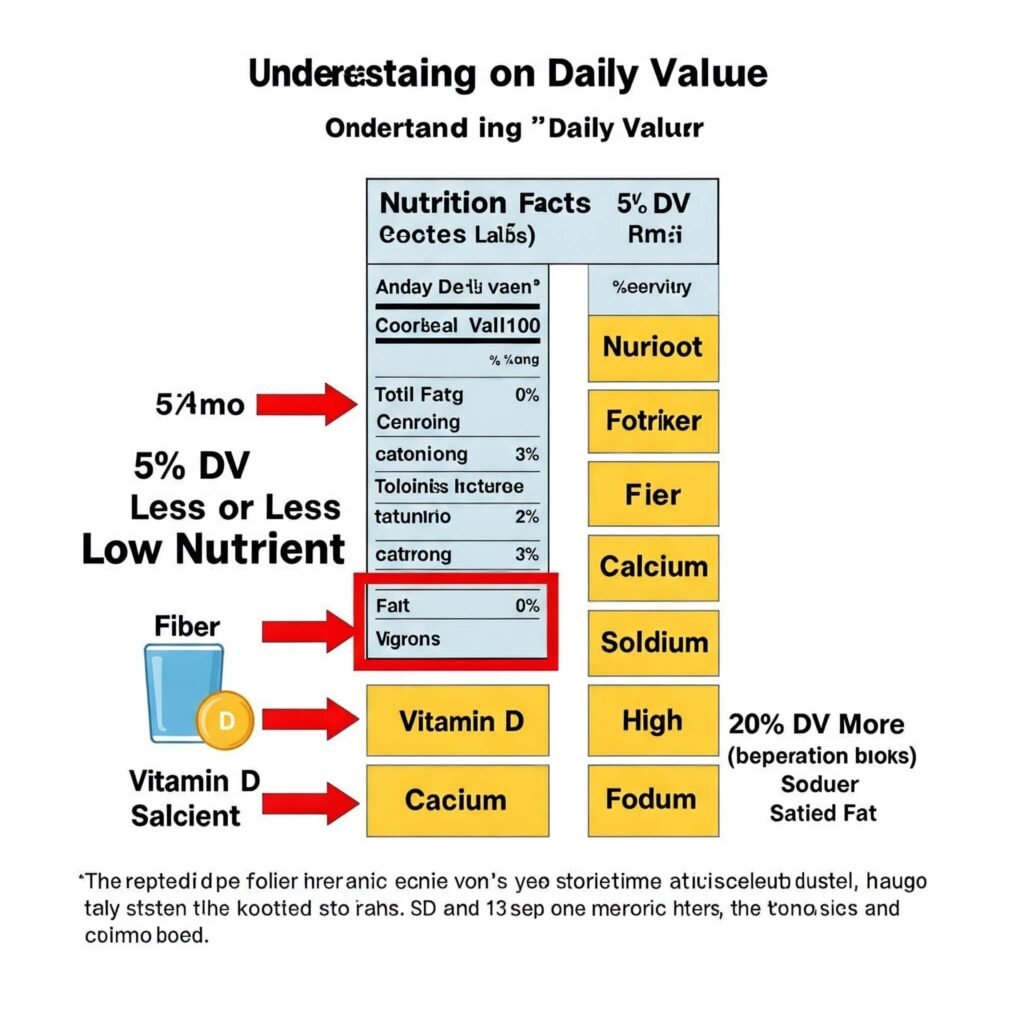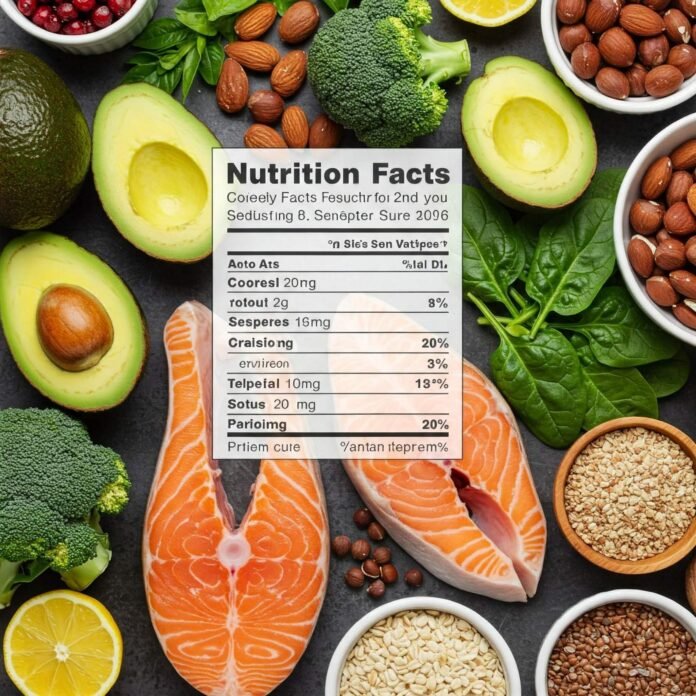Hey there! Have you ever picked up a food package, glanced at that little box of nutrition facts, and felt your eyes glaze over? You’re definitely not alone. Those labels, while packed with crucial nutrition information, can feel like deciphering a secret code. But what if I told you that learning how to properly read and understand nutrition facts is one of the most powerful tools you have for making healthier choices for yourself and your family?
In this post, we’re going to dive deep into the world of nutrition facts explained. We’ll break down what each part means, why it matters, and how you can use this information effectively before your next meal or even your next grocery run. Let’s demystify those food labels together!
Why Understanding Nutrition Facts Matters for Your Health
Knowing how to read nutrition facts explained isn’t just about counting calories (though that’s part of it!). It’s about understanding the actual building blocks – or sometimes, the not-so-great extras – in the food you’re about to consume. This knowledge directly impacts:
- Weight Management: Calories are key here, but so are macros and fiber.
- Energy Levels: Different nutrients provide different types of energy and affect blood sugar.
- Managing Health Conditions: For conditions like diabetes, heart disease, or high blood pressure, tracking sugar, sodium, and certain fats is vital.
- Ensuring Nutrient Intake: Making sure you’re getting enough essential vitamins and minerals.
By making informed decisions based on nutrition facts explained, you gain control over your diet and move closer to your health goals. You can even compare your choices to established health guidance like the Dietary Guidelines for Americans.
Key Components of Nutrition Facts Explained: Decoding the Label
Ready to break down that box? Here are the essential parts of nutrition facts explained that you need to focus on:
Serving Size: The Foundation of Nutrition Facts

This is the most important place to start! All the numbers on the label (calories, nutrients, etc.) are based per serving. If you eat double the serving size, you’re getting double the calories, double the sugar, double the fat, and so on. The U.S. Food and Drug Administration (FDA) provides helpful resources on understanding how serving size impacts the entire label.
- Real-World Example: A bag of chips might list a serving size as “about 15 chips.” If you eat half the bag, which contains maybe 45 chips, you haven’t eaten one serving – you’ve eaten three servings! Multiply all the numbers by three to get the true picture of what you consumed.
Calories: The Energy Equation
After serving size, check the calories per serving and calories per container. Calories are a measure of energy. The number of calories you need depends on your age, sex, weight, and activity level.
- Takeaway: Pay attention to calories, but don’t let them be the only thing you look at. 100 calories from an apple is very different nutritionally from 100 calories from a candy bar.
Macronutrients (Macros): Protein, Carbs, and Fats Explained

These are the big players that provide most of your energy:
- Total Fat: Look here, but then check the types of fat below it.
- Cholesterol & Sodium: Important to monitor, especially for heart health. The Daily Value (%DV) is particularly helpful here.
Carbohydrates and Sugar: Decoding the Sweet Truth
- Total Carbohydrates: This includes everything from fiber to sugars.
- Dietary Fiber: This is a type of carb your body can’t digest. It’s great for digestion, helps you feel full, and can help manage blood sugar. Aim for more fiber!
- Total Sugars: This includes natural sugars (like those in fruit and milk) and Added Sugars. Paying attention to Added Sugars is crucial, as these contribute calories without essential nutrients and are linked to health issues when consumed excessively.
Fats: Not All Fats Are Created Equal
- Saturated Fat: Found in animal products and some plant oils. Too much can raise “bad” cholesterol.
- Trans Fat: Often found in processed foods (though less common now due to regulations). Avoid trans fats as they are harmful to heart health.
- Unsaturated Fats: (Monounsaturated and Polyunsaturated) Found in nuts, seeds, fish, and vegetable oils. These are considered “good” fats and can be beneficial for heart health. The label might not always list these, but you can infer them by subtracting saturated and trans fats from total fat. Learn more about different types of fats from resources like the American Heart Association.
Protein: The Building Block
Protein is essential for building and repairing tissues, muscle, and more. Ensure your meals provide adequate protein, especially if you’re active or managing your weight.
Micronutrients (Vitamins and Minerals): Your Daily Dose

This section shows some key vitamins and minerals and their percentage of the Daily Value (%DV). The %DV tells you how much of a nutrient is in a serving based on a standard 2,000-calorie daily diet. Understanding %DV helps you see how a food fits into your overall daily nutrient goals.
- 5% DV or less is considered low.
- 20% DV or more is considered high.
Use this to see if a food is a good source of nutrients you need more of (like Vitamin D, Calcium, Iron, Potassium) and whether it’s high in nutrients you might want to limit (like Sodium, Saturated Fat). The FDA website has a detailed explanation of Daily Value.
The Ingredients List: More Than Just Names
Found below the nutrition facts explained panel, the ingredients list tells you exactly what’s in the food, in descending order by weight.
- Ingredients listed first are present in the largest amounts.
- Look for added sugars hidden under different names (e.g., high-fructose corn syrup, sucrose, dextrose, maltose).
- Be mindful of long lists of unfamiliar ingredients or additives if you prefer whole, less processed foods.
Common Pitfalls When Reading Nutrition Facts
- Ignoring Serving Size: This is the biggest mistake! Always check it first.
- Focusing on Just One Number: Don’t just look at calories or just sugar. Look at the overall nutritional profile.
- Misinterpreting %DV: Remember it’s based on a 2,000-calorie diet. Your needs might differ.
- Assuming “Healthy” Buzzwords Mean the Food is Nutritious: “Low fat,” “natural,” or “organic” labels don’t replace reading the nutrition facts and ingredients.
Actionable Steps to Master Nutrition Facts Before Your Next Meal
Ready to put this into practice? Here’s a simple process to use when looking at food labels:
- Start with Serving Size: How many servings are in the package? How many are you likely to eat? Adjust calculations accordingly.
- Check Calories: Get an idea of the energy density.
- Look at the “Limit These” Nutrients: Scan for Saturated Fat, Trans Fat, Sodium, and especially Added Sugars. Aim for lower numbers here.
- Look at the “Get Enough Of These” Nutrients: Check for Fiber, Vitamins, and Minerals. Aim for higher %DV here.
- Scan the Ingredients List: See what’s actually in the food and check for hidden sugars or undesirable additives.
Nutrition Facts Explained: Empowering Your Food Choices
Mastering nutrition facts explained might take a little practice, but it’s an incredibly valuable skill. It transforms you from a passive consumer into an active participant in your own health journey. Before your next meal, take that extra minute to look at the label. Don’t just see numbers; see the story of the food you’re about to eat.
By making informed choices based on nutrition information, you’re not just feeding yourself; you’re nourishing your body and building a healthier future, one meal at a time. Start applying these tips today!
































